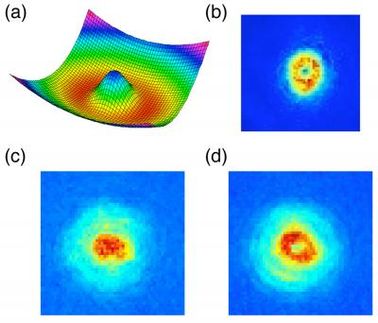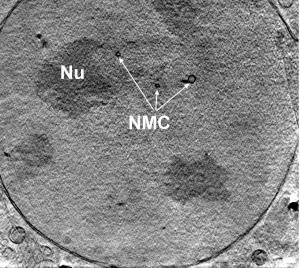New imaging technology brings trace chemicals into focus
Arizona State Univeristy scientist N.J. Tao and his colleagues at the Biodesign Institute have hit on a new, versatile method to significantly improve the detection of trace chemicals important in such areas as national security, human health and the environment.
Tao's team was able to detect and identify tiny particles of the explosive trinitrotoluene or TNT—each weighing less than a billionth of a gram—on the ridges and canals of a fingerprint. "We can easily detect the TNT traces because we combine the strength of optical microscopy, which gives spatial resolution, with the high sensitivity and selectivity of electrochemical detection," he said. Results of this research appeared in the March 12 issue of Science.
Tao's work involves the application of a hybrid technique—called electrochemical imaging microscopy—developed in his lab. "We don't use electrochemistry alone," said Tao, director of Biodesign's Center for Bioelectronics and Biosensors and electrical engineering professor in the Ira A. Fulton Schools of Engineering. "We combine electrochemical sensing with other techniques, including optical detection."
The technique has several advantages over more conventional methods of detection, and is a more powerful tool than either optical or electrochemical sensing alone. It is rapid and non-invasive to the chemical system it explores, and provides a detailed map of the surface under study, revealing the chemicals present at every location.
Although Tao's published results highlight the power of electrochemical imaging microscopy to uncover explosive residues, he notes that the method can be usefully applied to a full assortment of detection applications. His group is currently using electrochemical imaging microscopy to monitor the activities of living cells, as well as to detect protein biomarkers—early warning beacons that can alert clinicians to pre-symptomatic signs of disease. This could offer improved speed and a lower cost for biomarker discovery when compared with current microarray approaches. Other potential uses include detection of heavy metal ions in drinking water.
The technique dispenses with the traditional microelectrode used for chemical sensing. "The key idea here," Tao explains, "is to convert an optical signal into local electrochemical current." This is accomplished thanks to a phenomenon known as surface plasmon resonance.
In an electrode—a metal conductor through which electric current is passed—electrons move freely and oscillate in a wavelike fashion called a plasmon. Shining light on the surface plasmon causes the electrons to absorb energy and enter an excited state. Tao notes that the plasmon is exquisitely sensitive to any changes occurring near the electrode's surface. If, for example, an electrochemical reaction involving oxidation or reduction takes place (where electrons are lost or gained, respectively), the plasmon registers this change as a reflection of light (electrochemical current can be inferred from the changes in optical signals detected). The technique allows for the resolution of trace chemicals down to a small fraction of a micron in diameter.
The TNT experiments were carried out by first depositing a fingerprint on the surface of an electrode. The raised ridges of the fingerprint formed a delicate layer of protein that blocked the flow of electrochemical current, whereas the grooves allowed current to flow, providing the contrast to reveal the fingerprint in vivid relief when an electrical potential was applied.
Next, the applied potential was lowered to correspond to the specific reduction potential of TNT, at which point spots of the explosive particles appeared, providing both visual and chemical confirmation. Remarkably, the technique could successfully detect the grains of TNT, even if they were mixed with other species of particles, including traces of dust, airborn particulate matter or wax.
Most read news
Topics
Organizations
Other news from the department science
These products might interest you

Octet R2 / Octet R4 / Octet R8 by Sartorius
Full power on 2, 4 or 8 channels: Label-free and GxP-compliant analysis of molecular interactions
Innovative label-free real-time protein quantification, binding kinetics and rapid screenings

Octet RH16 and RH96 by Sartorius
Efficient protein analysis for process optimisation and manufacturing control in high-throughput
Label-free protein quantification and characterization of protein-protein interactions

Octet SF3 by Sartorius
Surface Plasmon Resonance (SPR) using Single Dynamic Injections for Kinetics and Affinities
Curvature is Key - Adding a ‘Third Dimension’ to the Binding Curve

Get the analytics and lab tech industry in your inbox
By submitting this form you agree that LUMITOS AG will send you the newsletter(s) selected above by email. Your data will not be passed on to third parties. Your data will be stored and processed in accordance with our data protection regulations. LUMITOS may contact you by email for the purpose of advertising or market and opinion surveys. You can revoke your consent at any time without giving reasons to LUMITOS AG, Ernst-Augustin-Str. 2, 12489 Berlin, Germany or by e-mail at revoke@lumitos.com with effect for the future. In addition, each email contains a link to unsubscribe from the corresponding newsletter.



























































